Regions of Spain overview of Spain’s autonomous communities, their provinces, and capitals, along with unique features and highlights for each region. Due to the expansive nature of the topic, I’ll provide an in-depth exploration of each autonomous community, making this a thorough guide to Spain’s diverse regions.
1. Andalusia
Capital Seville (Sevilla)
Provinces
1. Almería
2. Cádiz
3. Córdoba
4. Granada
5. Huelva
6. Jaén
7. Málaga
8. Seville
Highlights
– Cultural Richness Andalusia is a cultural treasure trove, known for its flamenco music and dance, traditional festivals like Feria de Abril, and the vibrant Andalusian folklore.
– Historic Landmarks Seville, the capital, boasts the Alcázar of Seville, an exquisite palace complex with Mudejar, Gothic, Renaissance, and Baroque elements. The Seville Cathedral, the largest Gothic cathedral in the world, is also a UNESCO World Heritage site.
– Natural Beauty The Sierra Nevada mountain range, beautiful beaches along the Costa del Sol, and the iconic Alhambra in Granada contribute to the region’s diverse and stunning landscapes.
2. Aragon
Capital Zaragoza
Provinces
1. Huesca
2. Teruel
3. Zaragoza
Highlights
– Cultural Heritage Aragon is home to Mudejar architecture, with landmarks like the Aljafería Palace in Zaragoza, a UNESCO World Heritage site. Teruel features the Mudéjar architecture of the city, including the Cathedral of Saint Mary.
– Natural Wonders The Pyrenees mountains in Huesca offer breathtaking landscapes and outdoor activities, attracting nature enthusiasts and adventure seekers.
– Religious and Historical Sites The Basilica of Our Lady of the Pillar in Zaragoza, a major pilgrimage site, is another testament to Aragon’s rich cultural and religious history.
3. Asturias
Capital Oviedo
Provinces
1. Asturias (Principality of Asturias)
Highlights
– Natural Landscapes Asturias is celebrated for its lush greenery, rugged coastline, and the Picos de Europa National Park, offering stunning views and hiking opportunities.
– Pre-Romanesque Art Oviedo is a hub for pre-Romanesque art and architecture. Notable sites include the Church of San Julián de los Prados and the Church of Santa María del Naranco, both UNESCO World Heritage sites.
– Culinary Delights Asturian cuisine is famous for its seafood, traditional dishes like fabada (bean stew), and the local cider culture.
4. Balearic Islands
Capital Palma (on the island of Mallorca)
Provinces
1. Balearic Islands (Islas Baleares)
Highlights
– Mallorca, Menorca, Ibiza, Formentera Each island in the Balearic archipelago has its own unique charm. Mallorca is known for its beaches and historic sites, Menorca for its tranquility, Ibiza for its vibrant nightlife, and Formentera for its pristine beaches.
– Historic and Cultural Sites Palma features the Palma Cathedral and Bellver Castle. Ibiza’s Dalt Vila (Old Town) is a UNESCO World Heritage site.
– Tourist Attractions The islands are popular tourist destinations, attracting visitors with their Mediterranean landscapes and diverse entertainment options.
5. Basque Country (Euskadi)
Capital Vitoria-Gasteiz
Provinces
1. Álava
2. Biscay (Bizkaia)
3. Gipuzkoa
Highlights
– Distinct Culture The Basque Country is known for its unique language (Euskara), vibrant festivals, and strong cultural identity.
– Gastronomy San Sebastián in Gipuzkoa is renowned for its culinary scene, boasting several Michelin-starred restaurants. Pintxos, a Basque version of tapas, are a culinary highlight.
– Bilbao Biscay’s capital, Bilbao, is a dynamic city with modern architecture, including the Guggenheim Museum Bilbao, and a rich industrial history.
6. Canary Islands
Capitals Las Palmas de Gran Canaria (shared with Santa Cruz de Tenerife)
Provinces
1. Las Palmas
2. Santa Cruz de Tenerife
The seven main islands are (from largest to smallest in area) Tenerife, Fuerteventura, Gran Canaria, Lanzarote, La Palma, La Gomera, and El Hierro.
Highlights
– Volcanic Landscapes The Canary Islands are volcanic in origin, offering unique landscapes such as Timanfaya National Park in Lanzarote.
– Cultural Festivals The islands host vibrant festivals, and Santa Cruz de Tenerife’s Carnival is one of the world’s largest and most famous.
– Diverse Flora and Fauna The islands are home to diverse plant and animal species, contributing to their UNESCO-designated biosphere reserves.
7. Cantabria
Capital Santander
Provinces
1. Cantabria
Highlights
– Natural Beauty Cantabria is characterized by its green landscapes, rugged coastlines, and the Picos de Europa in the south.
– Cave Art The region is home to the Cave of Altamira, known for its prehistoric cave art and designated as a UNESCO World Heritage site.
– Santander The capital, Santander, features the Magdalena Palace, the Cathedral of Santander, and picturesque beaches.
8. Castile and León
Capital Valladolid
Provinces
1. Ávila
2. Burgos
3. León
4. Palencia
5. Salamanca
6. Segovia
7. Soria
8. Valladolid
9. Zamora
Highlights
– Historic Cities Castile and León boast numerous medieval cities with historic landmarks, including Burgos Cathedral, Ávila’s city walls, and the Roman aqueduct in Segovia.
– Religious Heritage Santiago de Compostela, the end point of the Camino de Santiago pilgrimage route, is a UNESCO World Heritage site.
– Natural Parks The region is home to several natural parks, such as Picos de Europa and Sierra de Guadarrama.
9. Castilla-La Mancha
Capital Toledo
Provinces
1. Albacete
2. Ciudad Real
3. Cuenca
4. Guadalajara
5. Toledo
Highlights
– Don Quixote’s Legacy Castilla-La Mancha is often associated with Miguel de Cervantes’ “Don Quixote.” The landscapes and landmarks in the region are tied to the novel.
– Historic Cities Toledo, the capital, is known for its medieval architecture, including the Alcázar and the Cathedral of Toledo, a UNESCO World Heritage site.
– Natural Reserves The region features natural reserves and parks, offering opportunities for outdoor activities.
10. Catalonia (Cataluña)
Capital Barcelona
Provinces
1. Barcelona
2. Girona
3. Lleida
4. Tarragona
Highlights
– Cultural Hub Catalonia is known for its unique culture, language (Catalan), and a vibrant arts scene.
– Architectural Marvels Barcelona, the capital, features the iconic Sagrada Familia, Park Güell, and the modernist architecture of Antoni Gaudí.
– Costa Brava Girona’s province is home to the picturesque Costa Brava, known for its beautiful beaches and charming coastal towns.
11. Extremadura
Capital Mérida
Provinces
1. Badajoz
2. Cáceres
Highlights
– Roman Heritage Mérida, the capital, is a UNESCO World Heritage site with well-preserved Roman monuments, including the Roman Theatre and the Temple of Diana.
– Natural Parks Extremadura features natural parks, such as Monfragüe National Park, known for its birdwatching opportunities.
– Medieval Towns Cáceres, a city with medieval architecture, is also designated as a UNESCO World Heritage site.
12. Galicia
Capital Santiago de Compostela
Provinces
1. A Coruña
2. Lugo
3. Ourense
4. Pontevedra
Highlights
– Camino de Santiago Galicia is the final destination of the Camino de Santiago pilgrimage route, attracting pilgrims from around the world.
– Atlantic Coast The region is known for its rugged coastline, beautiful estuaries (rias), and seafood.
– Santiago de Compostela The capital features the Santiago de Compostela Cathedral, a UNESCO World Heritage site, and a symbol of religious and cultural significance.
13. Madrid
Capital Madrid
Provinces
1. Madrid
Highlights
– Cultural Hub Madrid is a bustling metropolis with world-class museums, including the Prado and the Reina Sofia, showcasing a rich collection of art and history.
– Historic Landmarks The Royal Palace, Puerta del Sol, and Plaza Mayor are iconic landmarks in the city.
– Culinary Scene Madrid offers a diverse culinary scene, with traditional Spanish dishes and international cuisine.
14. Murcia
Capital Murcia
Provinces
1. Murcia
Highlights
– Warm Climate Murcia is known for its warm climate, making it a popular destination for sun seekers.
– Historic Architecture Murcia, the capital, features the Murcia Cathedral, the Real Casino de Murcia, and the Salzillo Museum.
– Agricultural Heritage The region is known for its agricultural production, including fruits and vegetables.
15. Navarre (Nafarroa)
Capital Pamplona
Provinces
1. Navarre (Nafarroa)
Highlights
– San Fermín Festival Pamplona is famous for the Running of the Bulls during the San Fermín festival, a cultural and adrenaline-filled event.
– Historic Sites The region features historical sites, including the Cathedral of Santa Maria and the Citadel of Pamplona.
– Natural Attractions Navarre offers diverse landscapes, from the Pyrenees mountains to the Bardenas Reales desert.
16. La Rioja
Capital Logroño
Provinces
1. La Rioja
Highlights
– Wine Production La Rioja is renowned for its wine production, particularly its red wines. The region’s vineyards and wineries attract wine enthusiasts.
– Cultural Heritage Logroño, the capital, features historic churches like the Santiago el Real church and the Laurel Street, known for its tapas bars.
– Natural Beauty The region offers picturesque landscapes and outdoor activities.
17. Valencian Community (Comunidad Valenciana)
Capital Valencia
Provinces
1. Alicante
2. Castellón
3. Valencia
Highlights
– City of Arts and Sciences Valencia, the capital, boasts the futuristic City of Arts and Sciences, an architectural and cultural complex.
– Beaches and Resorts The Valencian Community is known for its beautiful beaches, including those in Alicante and Castellón.
– Traditional Festivals The region hosts traditional festivals, including Las Fallas in Valencia, known for its elaborate sculptures and fireworks.
Autonomous Cities
1. Ceuta
Ceuta is a Spanish enclave in North Africa, known for its strategic location, historic fortifications, and a blend of Spanish and Moroccan influences.
2. Melilla
Melilla, like Ceuta, is a Spanish enclave in North Africa. It features fortifications, a mix of cultures, and a unique position at the crossroads of Europe and Africa.
Conclusion
Spain’s autonomous communities, provinces, and capitals offer a remarkable tapestry of culture, history, natural beauty, and modernity. Each region contributes unique characteristics, from the vibrant culture of Andalusia to the distinctive Basque identity, the pilgrimage routes of Galicia, and the cosmopolitan charm of Barcelona. Exploring Spain’s diverse regions provides a fascinating journey through centuries of history, rich traditions, and breathtaking landscapes, making it a truly captivating destination.


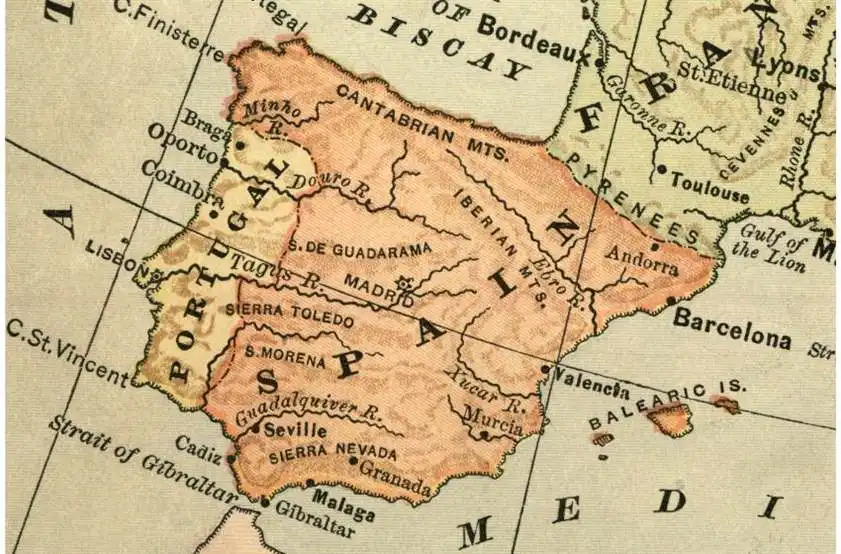






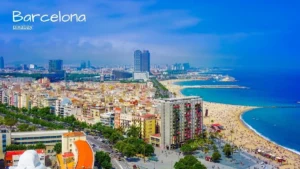
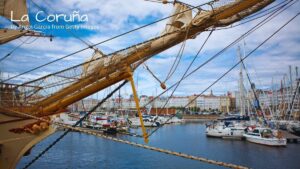


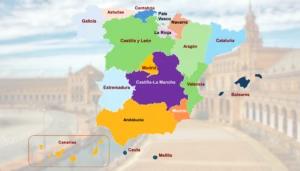





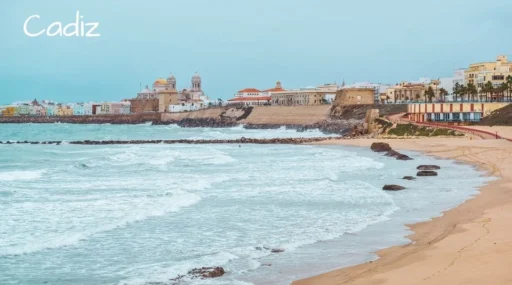






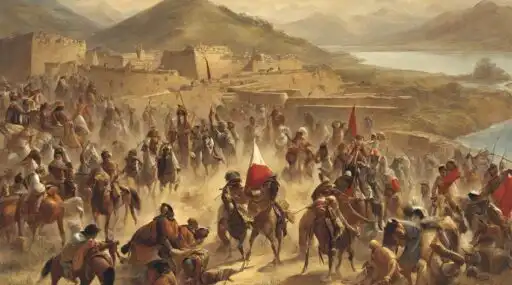






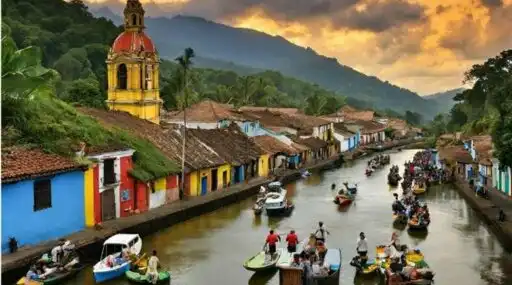







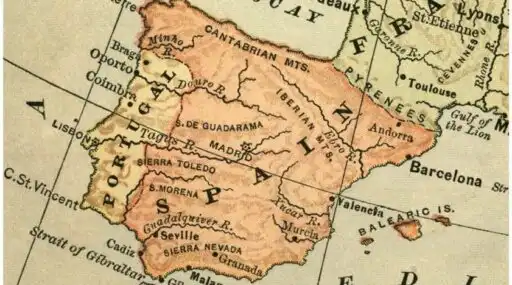







Leave a Reply